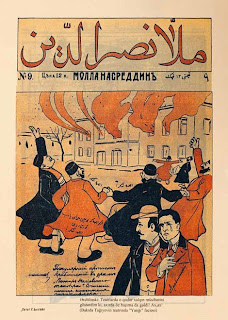Lists of people one admires, of course, say as much about
the person making the list as those on the list – about the qualities in people we respect and look for in others if not in ourselves. Authenticity, generosity, curiousity, passion and integrity
are key values for me - choosing one’s own path; and being open to others.
 I
admire 83-year old Viciu, my neighbour, for his resilience (tending to the livestock so
cheerily); his carpenter skills; and his warm acceptance of me as an eccentric outsider.
I
admire 83-year old Viciu, my neighbour, for his resilience (tending to the livestock so
cheerily); his carpenter skills; and his warm acceptance of me as an eccentric outsider.
I admire my friend Stefan in Slovakia for the way he has led the renaissance of an old Hungarian Palace which serves a mixture of a training centre, hotel and art gallery; given life to the village in which it is located; and for his passion for cultural travel and collecting artefacts.
I admire my friend Vihra in Sofia for her passionate encouragement of Bulgarian contemporary artists through the special exhibitions and vernissajs she arranges in her small gallery – and the beautiful bookmarks which accompany each exhibition.
 I
admire 83-year old Viciu, my neighbour, for his resilience (tending to the livestock so
cheerily); his carpenter skills; and his warm acceptance of me as an eccentric outsider.
I
admire 83-year old Viciu, my neighbour, for his resilience (tending to the livestock so
cheerily); his carpenter skills; and his warm acceptance of me as an eccentric outsider.I admire my friend Stefan in Slovakia for the way he has led the renaissance of an old Hungarian Palace which serves a mixture of a training centre, hotel and art gallery; given life to the village in which it is located; and for his passion for cultural travel and collecting artefacts.
I admire my friend Vihra in Sofia for her passionate encouragement of Bulgarian contemporary artists through the special exhibitions and vernissajs she arranges in her small gallery – and the beautiful bookmarks which accompany each exhibition.
Most belonged to the “old school” who had experienced poverty and the war. It
is, I think, difficult for the materialistic and narcissistic post-war generation
to develop real values.
I spent my formative years (26-50) as a reforming Regional
politician (with an academic base) – so had an unusually wide range of contacts
(political, professional, community). I consorted with senior people of all
sorts – civil servants, politicians, journalists, policemen, social workers…. and
felt that most were operating beyond their level of competence…..
Most people expected me to move on to national politics –
but I had looked into the eyes of so many national politicians and seen so much
emptiness. Tam Dalyell was a maverick Labour politician I admired – you can
sense his integrity from the detailed obituary he wrote here for John Smith,
the Scottish politician whose death in 1993 (?) robbed us of a better Labour PM in 1997
Amongst the 103 councillors elected to the powerful new
Strathclyde Region in 1974 with me, there were many of the time-servers you would
expect to find. But the powers of the
new Region had attracted a good calibre of politician - the experienced
leadership of the old counties and a good mix of younger, qualified people
(despite the obvious full-time nature of the job, we were expected to do it for
a daily allowance of about 15 euros. Clearly the only people who could
contemplate that were the retired, the self-employed or those coming from
occupations traditionally supportive of civic service - eg railwaymen or, like
myself, educationalists)
With a strong sense of heading into the unknown, a dual
leadership was created - with the public persona (the President and Policy
Leader) being someone fairly new to politics, a Presbyterian Minister (without
a church) who had made his name in "urban ministry" working with the
poor. Geoff Shaw inspired great respect - particularly in the world outside
normal politics - and brought a new approach. He was determined to have more
open and less complacent policy-making: particularly with respect to social
inequalities.
Appointed as the Leader of the Majority Group (and therefore
holding the patronage powers) was an older and politically much more
experienced man - an ex-miner. Dick Stewart may not have had the formal education and eloquence of Geoff but he commanded
respect (and fear!) amongst both politicians and officials of the Council for
his ability to get to the heart of any matter and for his honesty. He readily
grasped the key elements in any issue: and would not easily deviate from
policy. To persuade him to change, you had to have very strong arguments or
forces on your side - and a great deal of patience. This made for policy
stability: occasionally frustrating but so much more acceptable than the vacillation
and fudge which passes for so much policy-making! Geoff stood for moral
direction: Dick for order.
Both had a deep sense of justice: and utter integrity to
their principles. And the new political structures unusually adopted for this
most unusual of local authorities gave them both an equal share in policy
leadership.
The difference in perspectives and styles occasionally
caused problems: but both approaches were very much needed in the early years. Sadly,
when 4 years later, the Convener died, the tensions led to a rethink of the
concept: and all power concentrated in the hands of the Leader.









.jpg)




